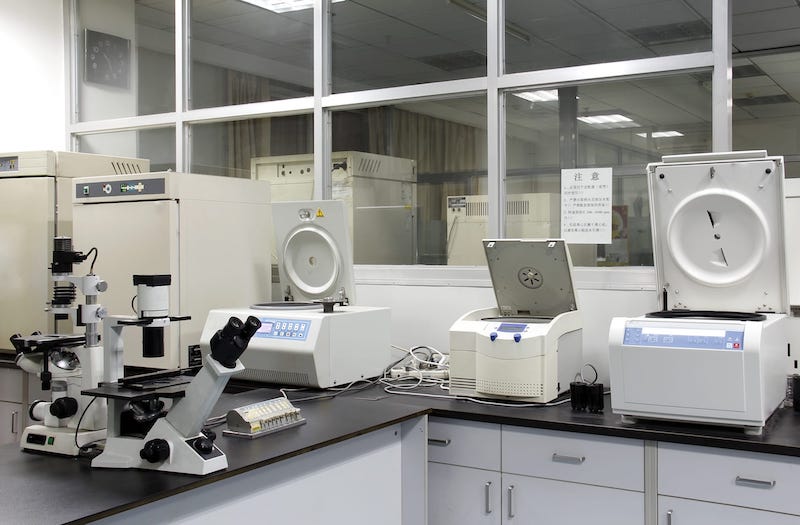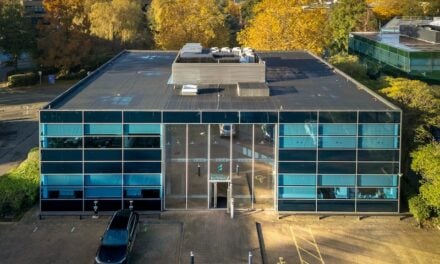The key to addressing challenges in maintaining and servicing medical lab equipment lies in adopting innovative approaches and leveraging advanced technologies, according to a new report from Aquant.
By Sidney Lara
In the fast-paced health care industry, the maintenance and servicing of medical lab equipment play a pivotal role in continuing medical excellence. Service technicians, who form the backbone of this sector, are crucial yet often underappreciated. Their work is vital for accurate diagnostics, seamless patient care, and the efficient operation of health care facilities.
Consistent maintenance ensures the reliability and precision of medical instruments, safeguarding against diagnostic inaccuracies and delays in treatment that could adversely affect patient health.
However, with the global medical device market witnessing exponential growth, challenges such as supply chain disruptions, escalating service costs, impending workforce retirements, and widening knowledge gaps have become more pronounced. Aquant’s 2024 Medical Device Field Service Benchmark Report sheds light on these issues, with a specific focus on medical device service workforce in laboratory settings.
Understanding the Current State of Lab Equipment
Aquant’s analysis explores the operational intricacies of over 20 organizations, encompassing more than 3.3 million work orders across more than 462,000 assets managed by upwards of 15,000 technicians, amounting to nearly $1.1 billion in service costs. This comprehensive analysis reveals that lab equipment services have a higher first-time fix rates and a smaller skills gap compared to their patient-facing counterparts. This can be attributed to the more straightforward nature of their equipment, consistent builds, and streamlined service training process.
However, significant challenges remain. Notably, lab equipment medical device companies experience extended resolution times—a failed first visit could lead to three visits overall to resolve a maintenance issue, as well as 15 days added to the resolution time, an indication of the complexity of maintaining lab equipment. Lab equipment downtime not only incurs direct losses for equipment owners but also significantly impacts clinical laboratories by reducing profitability and operational efficiency, damaging reputation, and undermining customer satisfaction.
Strategic Insights and Solutions
The key to addressing these challenges lies in adopting innovative approaches and leveraging advanced technologies. The concept of “Shift Left,” which emphasizes moving toward remote resolutions, is a critical strategy. By enabling technicians or even customers to address issues remotely, resolution times can be significantly reduced, costs cut, and equipment downtime minimized—a critical factor in lab settings.
The Cost of Lab Equipment Service and Skills Gap
Interestingly, the Aquant report highlights a stark cost disparity between top and bottom performers within lab equipment service. Bottom performers cost 25% more than the highest performers, with the most expensive workforce gap being more than double the cost for the lowest-performing employees. This underlines the urgent need for upskilling and making every team member equally knowledgeable about the equipment they’re servicing and best practices to solve common problems.
Toward a Brighter Horizon: Key Recommendations and Emerging Trends
As we stand at the cusp of a technological renaissance in lab equipment service, several key trends and recommendations pave the way for a brighter future:
- Emphasis on Soft Skills and Technical Proficiency: The rapidly evolving tech landscape necessitates a dual approach that values both advanced technical know-how and the development of soft skills, including leadership, communication, and empathy. This holistic approach to training ensures that the workforce is not only technically adept but also capable of navigating the nuanced demands of healthcare providers.
- Strengthening In-House Technical Teams: By bolstering in-house expertise, companies can offer more personalized and immediate responses to technical issues, enhancing service quality and fostering stronger partnerships with health care providers.
- Leveraging Connectivity and Serviceability: The integration of AI, robotics, and wireless connectivity into modern medical devices is not just a trend; it’s a shift toward smarter, more connected lab environments. Embracing these technologies enhances service capabilities and operational efficiency.
- Strategic Use of Analytics and Advanced Tools: The implementation of analytics, alongside AI and AR tools, offers actionable insights that drive efficiency, improve patient outcomes, and guide strategic decision-making. These tools, many of which are readily available and require minimal customization, represent a critical investment for the future.
Beckman Coulter: A Case Study in Innovation and Efficiency
Beckman Coulter, with its extensive portfolio of diagnostic laboratory equipment, found itself at a crossroads similar to many in the industry: navigating the complexities of maintaining state-of-the-art equipment while striving to meet the evolving demands of health care providers. The challenges were multifaceted, encompassing the need for rapid resolution times, managing a skills gap among technicians, and ensuring the highest levels of service efficiency and equipment reliability.
Beckman Coulter’s strategic initiatives to tackle these challenges yielded remarkable results, impacting its service delivery and operational efficiency. Here’s a closer look at the outcomes:
- Improved Remote Resolution Rate and Repair Return Rates: One of the most significant achievements was the improvement in the Remote Resolution Rate. Through the implementation of advanced diagnostics and the “Shift Left” strategy, Beckman Coulter was able to enhance its operational efficiency, which in turn led to a 22% improvement in Repair Return Rates over eight months. This not only reduced the need for on-site visits but also significantly decreased equipment downtime, directly impacting laboratory productivity and patient care.
- Increased Productivity: The adoption of innovative service strategies and technologies enabled Beckman Coulter to handle a 7-9% increase in case volume without compromising service quality. More remarkably, this was achieved alongside a reduction in resolution time, showcasing the company’s ability to scale efficiently while enhancing service speed and reliability.
- Made Faster Service Decisions: Beckman Coulter’s strategic use of data analytics and advanced technologies facilitated more streamlined and data-driven decision-making. This approach allowed the company to quickly identify workforce and asset gaps, improve strategic planning, and optimize overall performance. The result was not just faster service decisions but also a more agile and responsive service model that could adapt to the dynamic needs of the healthcare landscape.
These outcomes highlight Beckman Coulter’s successful navigation through the complexities of lab equipment service in the medical device sector. By focusing on strategic investments in technology, prioritizing upskilling, and embracing forward-thinking service models, Beckman Coulter not only overcame the inherent challenges but also set new benchmarks for service excellence and operational efficiency.
The case of Beckman Coulter serves as a compelling example for the industry, demonstrating that with the right strategies and technologies, companies can transform service delivery, increase efficiency, and ultimately provide better support to healthcare providers and patients alike.
The Future is Now: Navigating the Next Frontier in Lab Equipment Service
The emphasis on maintenance and servicing of medical lab equipment is not just a routine task—it’s a strategic imperative for delivering high-quality patient care and embracing the rapid technological evolutions shaping the industry. As Aquant’s 2024 Medical Device Field Service Benchmark Report highlights, we stand on the cusp of significant transformations in the medical device sector. This era is characterized by enhanced connectivity, the rise of remote servicing capabilities, and the crucial need to bridge the technician talent gap, reflecting a broader shift towards digital healthcare solutions.
These developments underline the necessity for service organizations to adopt innovative tools and strategies, ensuring they can offer exceptional standards of service. Prioritizing lab equipment maintenance and service thus becomes essential not just for operational efficiency but as a cornerstone for fostering innovation and improving patient care. By investing in new technologies, focusing on upskilling technicians, and moving toward more progressive service models, companies in the lab equipment domain can overcome present challenges and set new standards of service excellence. This forward-thinking approach will not only drive the industry ahead but will also enhance the care provided to healthcare practitioners and their patients, ensuring that the sector can keep pace with the ceaseless march of technological advancement.
About the Author

Sidney Lara is currently the service principal at Aquant, an enterprise AI software vendor focused on improving customer experience. With over 20 years of experience in operations and service leadership, he is passionate about eliminating waste from business processes and focusing on the activities that create value for customers. Sidney started his career as a field technician working his way through various technical and operations leadership roles.





